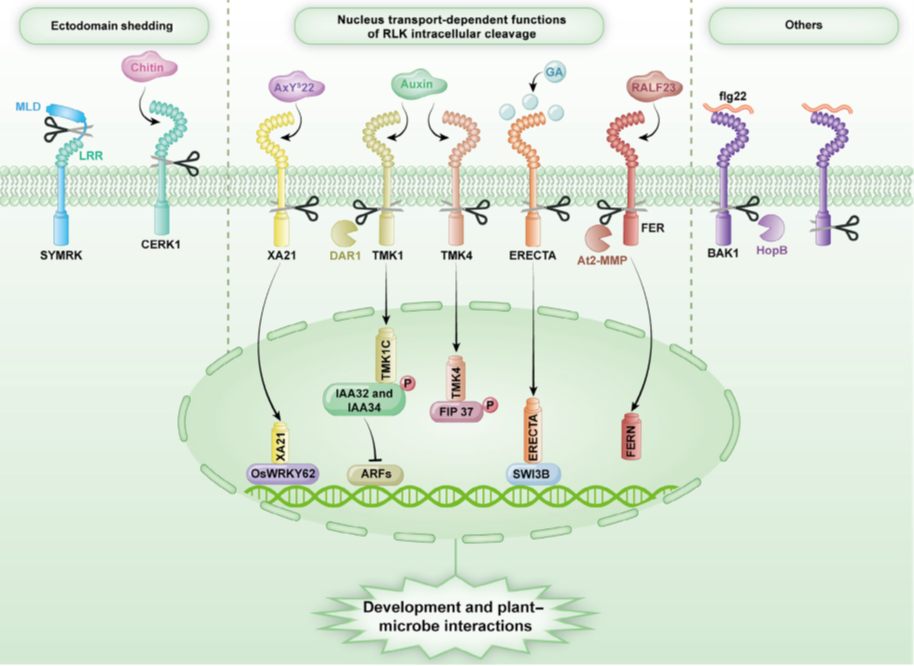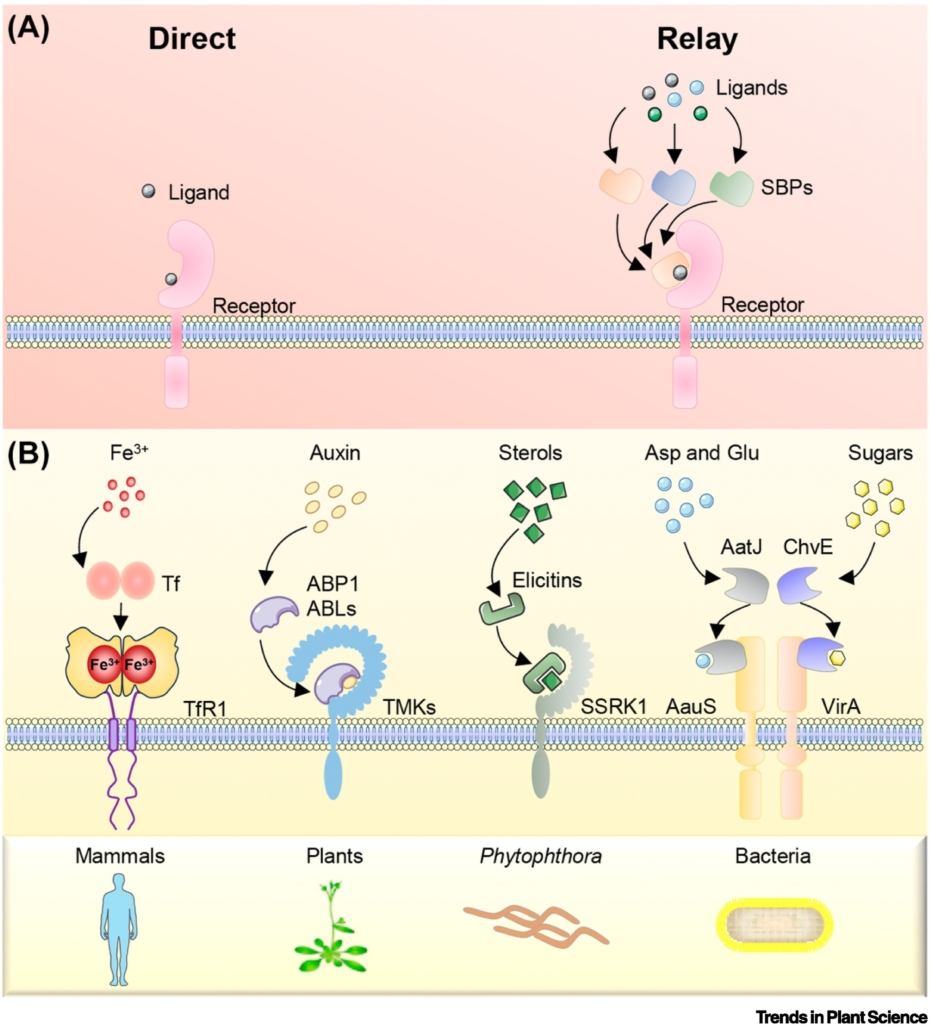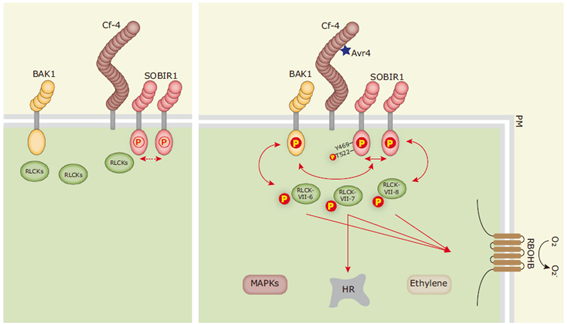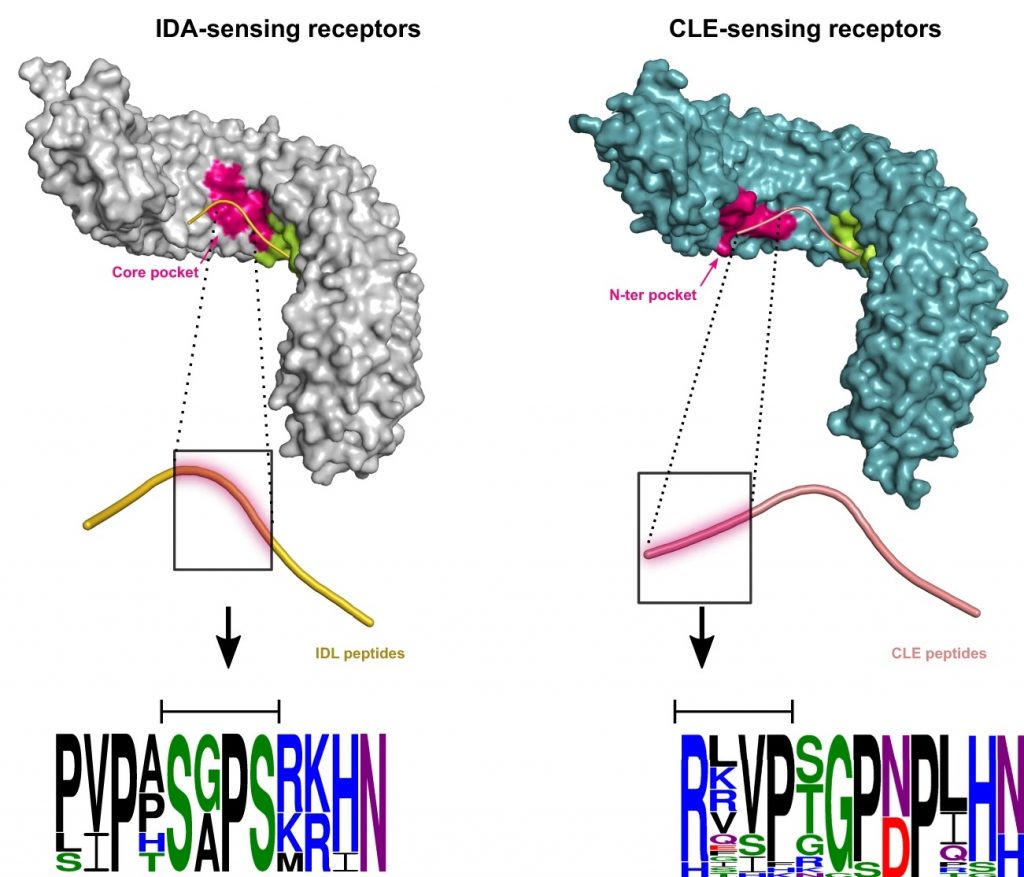
Review. Alternative modes of RLK function: Insights into cleavage-driven plant signaling
Plant Science Research WeeklyReceptor-like kinases (RLKs) constitute a large family of membrane-bound proteins in plants. The Arabidopsis genome encodes over 600 RLKs, while the rice genome contains more than 1,000. RLKs are best known for their role in perceiving environmental stimuli and triggering downstream signaling pathways…

Plant surveillance: The emerging role of substrate-binding proteins
Plant Science Research WeeklyPlants are sessile organisms and, unlike animals, cannot escape adverse environmental conditions. To cope with this limitation, they have evolved a complex surveillance system to detect and respond to fluctuating conditions such as resource scarcity, environmental changes, and pathogen attacks. Membrane-bound…

Receptor-like cytoplasmic kinases of different subfamilies differentially regulate immune responses
Plant Science Research WeeklyCell surface receptor complexes act as the first line of defense in detecting pathogens and preventing invasion. Upon recognizing extracellular immunogenic patterns, a cascade of signaling relays occurs, mediated by phosphorylation events among a large array of membrane-associated proteins. These proteins…

HSL1 and BAM1/2 impact epidermal cell development by sensing distinct signaling peptides (Nature Comms)
Plant Science Research WeeklyCell-to-cell communication is crucial for coordinating plant immunity, development, and environmental adaptations. The main players in sensing signaling molecules are membrane receptor kinases such as Leucine Rich Repeat Receptor Kinases (LRR-RKs). In some cases these receptors detect peptide signals.…

